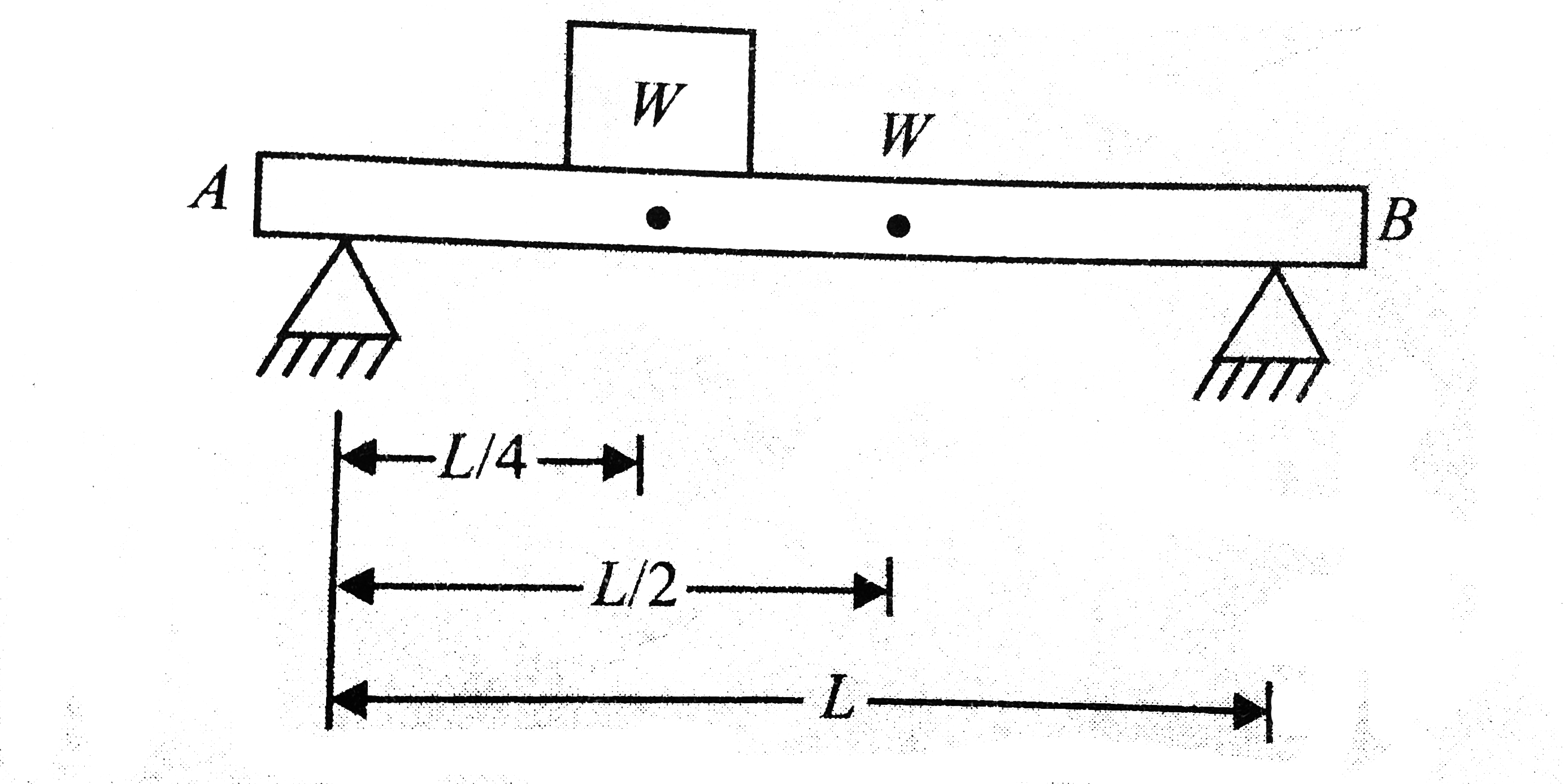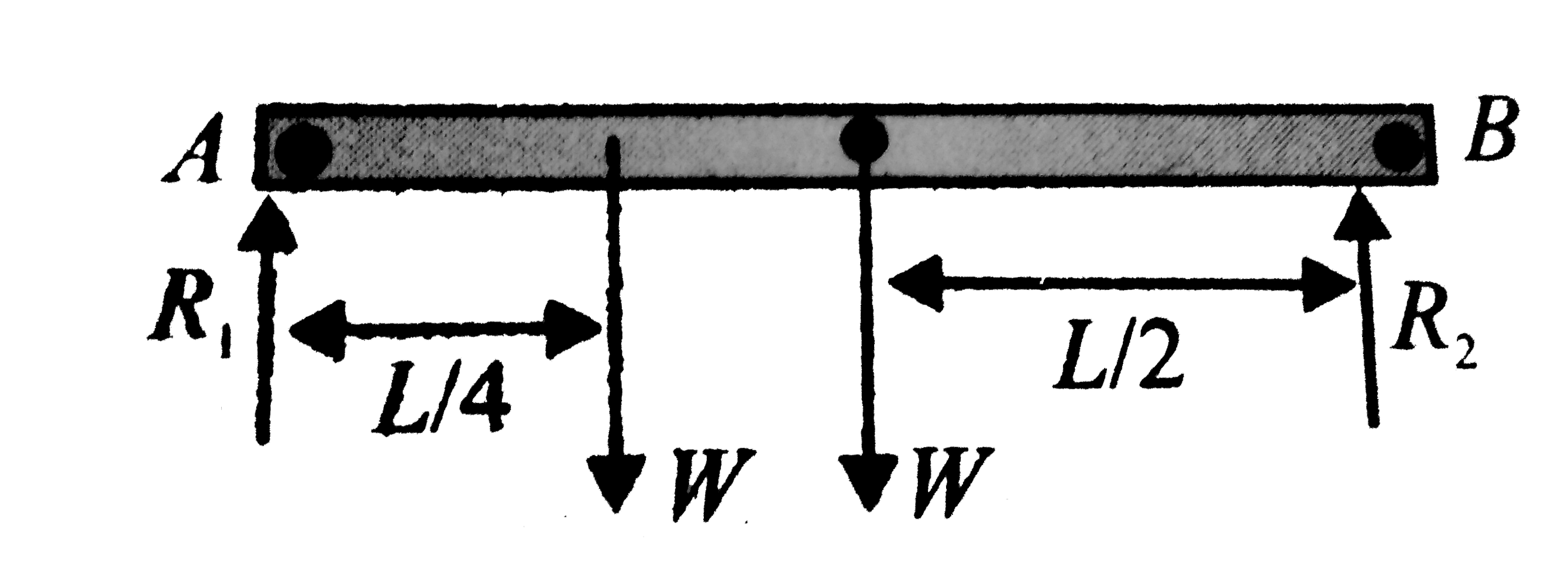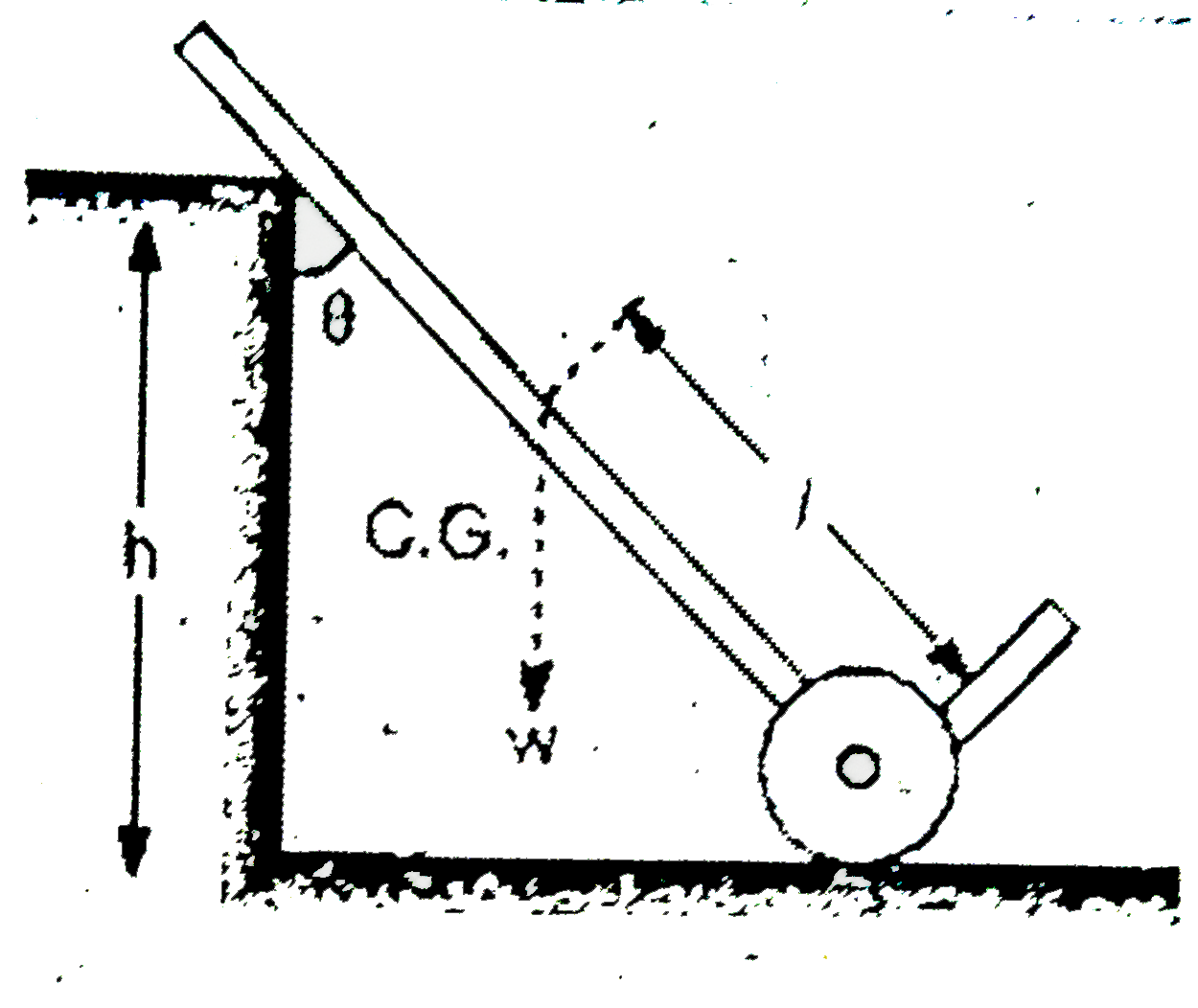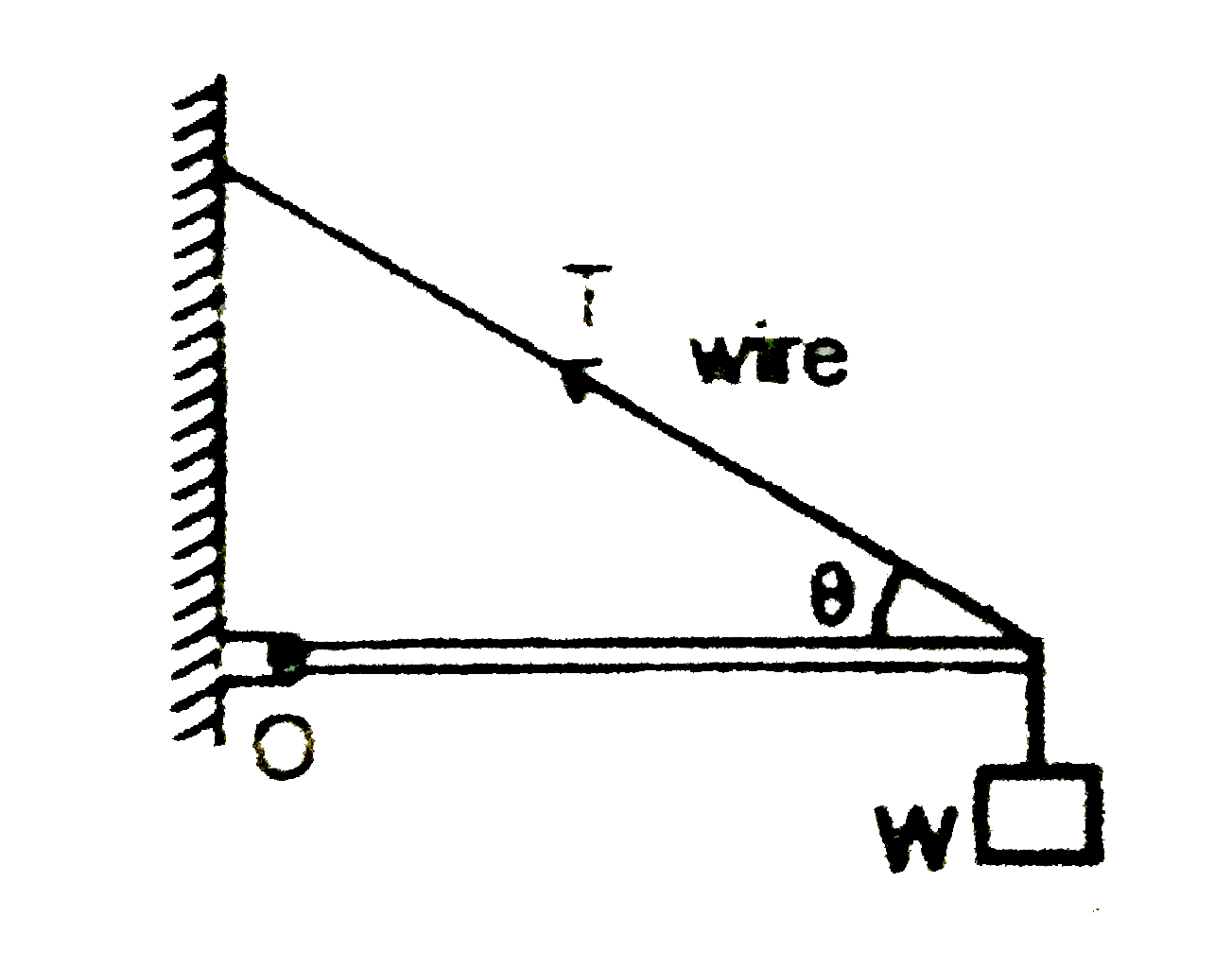A beam of weight W supports a block of weight W. The length of the beam is I. and weight is at a distance L4 from the left end of the beam. The beam rests on two rigid supports at its ends. Find the reactions of the supports.

R1+R2=2W

Balancing torque about A
R2L=WL4+WL2
R2=3W4 and R1=5W4
Topper's Solved these Questions
- RIGID BODY DYNAMICS 1BOOK - CENGAGE PHYSICSCHAPTER - RIGID BODY DYNAMICS 1EXERCISE - Exercise 2.4
11 Videos
- RIGID BODY DYNAMICS 1BOOK - CENGAGE PHYSICSCHAPTER - RIGID BODY DYNAMICS 1EXERCISE - Subjective
13 Videos
- RIGID BODY DYNAMICS 1BOOK - CENGAGE PHYSICSCHAPTER - RIGID BODY DYNAMICS 1EXERCISE - Exercise 2.2
17 Videos
- PROPERTIES OF SOLIDS AND FLUIDSBOOK - CENGAGE PHYSICSCHAPTER - PROPERTIES OF SOLIDS AND FLUIDSEXERCISE - INTEGER_TYPE
2 Videos
- RIGID BODY DYNAMICS 2BOOK - CENGAGE PHYSICSCHAPTER - RIGID BODY DYNAMICS 2EXERCISE - Interger
2 Videos
Similar Questions
A baggage cart of weight w rests on a wall of height h. Its centre of gravity is at a distance L from the wheel as shown in fig.

View SolutionA balance similar to a Roman steel yard is constructed such that the length of the scale on the beam of the balance is 50 cm and the least count on the scale is 1 mm. The zero mark of the scale is at a distance of 15 cm from the point of suspension of the balance. The hook that is used to attach the loads and the centre of gravity of the beam are at distance 8 cm and 5 cm, respectively, from its fulcrum. If the weight of the rider of the balance is 50 gf, find the weight of the beam, the maximum load that can be measured using the balance and its least count.
View Solution
Knowledge Check
A rigid mass less rod of length L is hinged at its one end a weight W is hung at a distance l(<L) from this end.
What is force P should be applied upwards at the other end so that the rod remains in equilibrium horizontally ?
 .AW(L−l)LBW(L−l)lCWlLDWLl
.AW(L−l)LBW(L−l)lCWlLDWLlA uniform rod of length L and weight WR is suspended as shown in the accompanying figure. A weight W is added to the end of the rod. The rod rests in horizontal position and is hinged at O. the support wire is at an angle θ to the rod. What is the tension T in the wire ?
 AT=WsinθBT=W+WRCT=W+1/2WRDT=W+1/2WRsinθ
AT=WsinθBT=W+WRCT=W+1/2WRDT=W+1/2WRsinθA light sprial spring supports 200g weight at its lower end oscillates with a period of 1s. The weight that must be removed from the lower end to reduce the period to 0.5s is
A100gB50gC150gD200g
A uniform heavy rod of weight W, cross sectional area a and length L is hanging from fixed support. Young modulus of the material of the rod is Y. Neglect the lateral contraction. Find the elongation of the rod.
View SolutionA cross is being carried by three persons. The beam ABC of the cross has a length of 10 m and the cross piece DBE is of 2 m length such that DB = BE. The weight of the beam and cross piece is uniform at the rate of 10 k.N.pm. The cross is being supported by one person at the end A and another two persons support it at the ends D and E of the cross piece. Then :
The distance of the cross piece DBE from the end A of the beam if all the three persons are carrying equal weight each.
View SolutionA beam of length l is supported at one end. If W is the uniform load per unit length, the bending moment M at a distance x from the end is given by M=12lx−12Wx2. Find the point on the beam at which the bending moment has the maximum value.
View SolutionA cross is being carried by three persons. The beam ABC of the cross has a length of 10 m and the cross piece DBE is of 2 m length such that DB = BE. The weight of the beam and cross piece is uniform at the rate of 10 k.N.pm. The cross is being supported by one person at the end A and another two persons support it at the ends D and E of the cross piece. Then :
If the cross is to be carried by one person only on his shoulder then the distance from A, it should be supported on the shoulder is ............
View SolutionOne end of uniform wire of length L and of weight W is attached rigidly to a point in the roof and a weight W1 is suspended from its lower end. If s is the area of cross section of the wire, the stress in the wire at a height (3L/4) from its lower end is
View Solution
